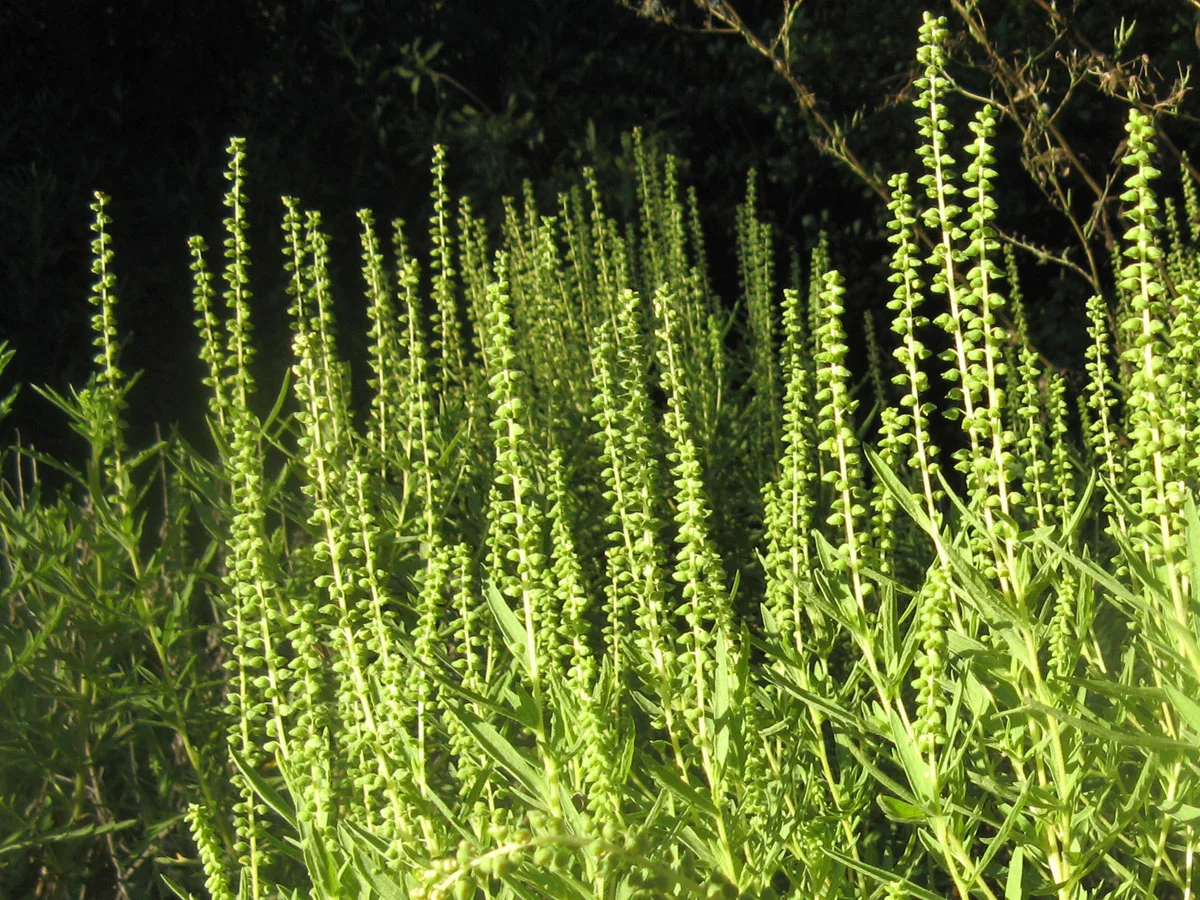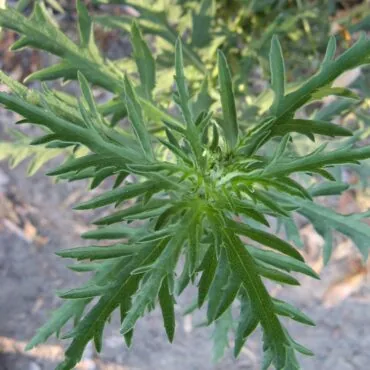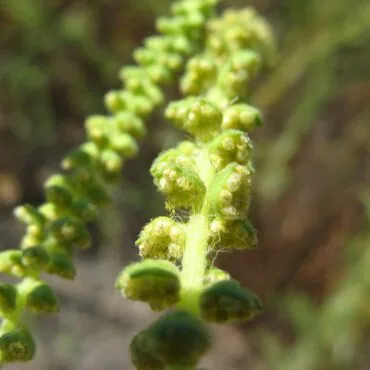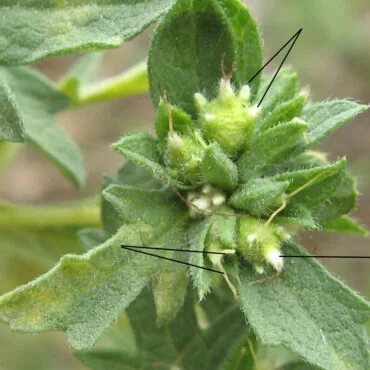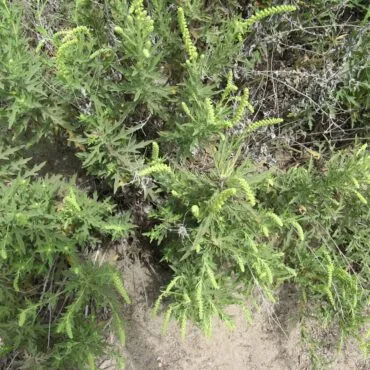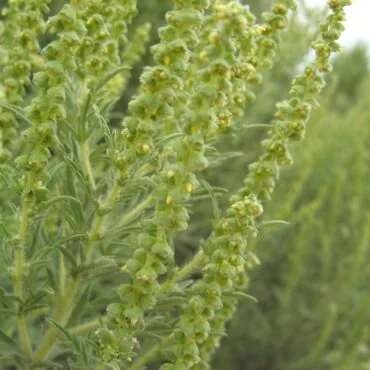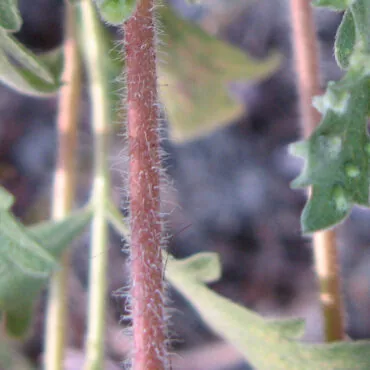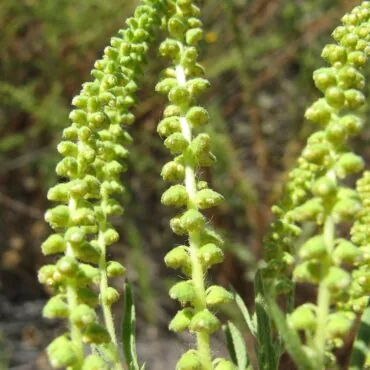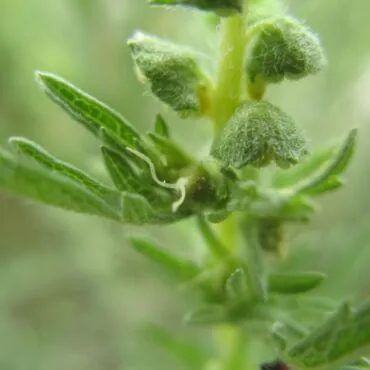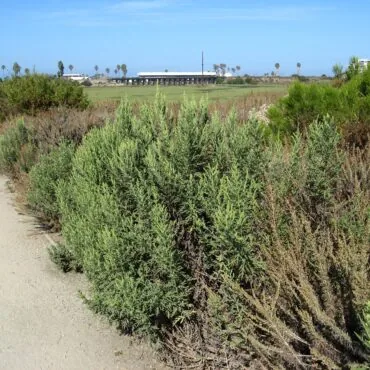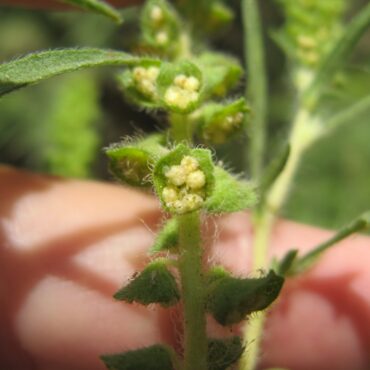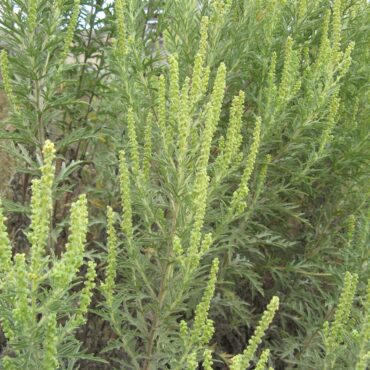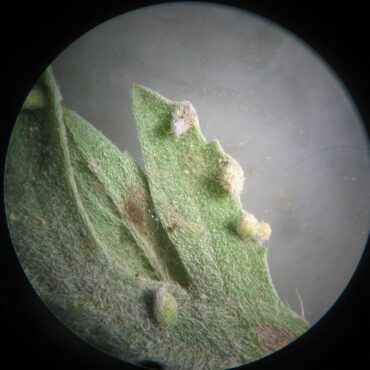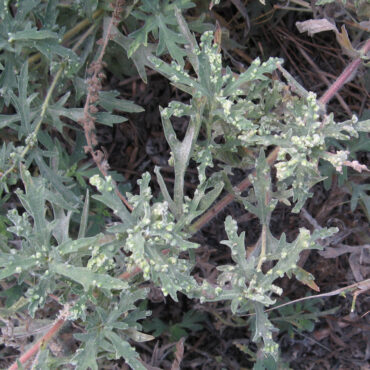Ecology
449
Most plants are pollinated by insects or birds, but a few rely instead on the wind (they are anemophilous).41,449 These latter include most of the pines, grasses, oaks and the infamous ragweeds. Instead of attracting biological pollinators with showy flowers, sweet scents, and or nectar, wind-pollinated plants produce prodigious quantities of small light pollen grains to maximize the probability that one grain reaches a receptive female ragweed flower. They play the weather lottery.
Western ragweed has many of the characteristics typical of a wind-pollinated flower: flowers are small and inconspicuous, lacking the large colorful petals that attract biological pollinators; they produce neither fragrance nor nectar, but instead divert this energy into pollen production – one ragweed may shed up to a billion small pollen grains in one season;450,451 stamens and pistils are separated in different flower heads; male flower heads are at the top of the plant, the better to catch the airstream; female flower heads are lower where they are more likely to catch the settling pollen.
On the other hand, western ragweed does not have the open structure that often typifies a wind-pollinated plant. Stamens lack the long filaments that hold the anthers away from the flower where they blow in the wind and shed their pollen, and pistils lack the feathery stigmas that effectively filter the pollen from the air. Why a species evolves some strategies and not others – indeed, why plants become wind-pollinated at all – is the subject of active research.

